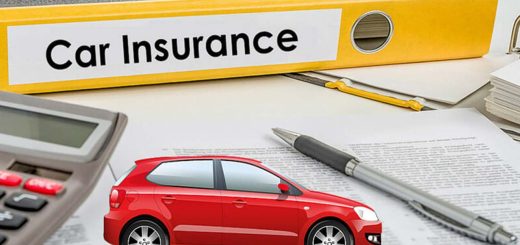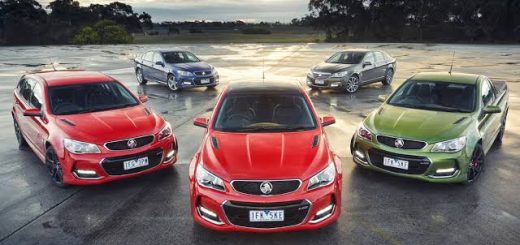Latest Car Insurance Rates in Nigeria (2024)
What are the car insurance rates in Nigeria 2024? A lot of people have been asking the question of what are the current costs and future outlook for car insurance rates in Nigeria?
With increasing vehicle ownership and insurance demand, how are premiums being shaped by economic, regulatory and market forces in 2024?
What key factors are causing fluctuations in motor insurance pricing across major cities like Lagos and Abuja?
How do costs vary for comprehensive versus third party cover based on vehicle type, age and value?
Are rates becoming more affordable with Nigeria’s post-recession recovery or does the sector face sustainability issues affecting growth?
This article explores Nigeria’s evolving car insurance landscape and the complex dynamics influencing rate trends.
Buying car insurance in Nigeria can be a challenging process, with many factors affecting the premiums that drivers pay. In 2024, car insurance rates in Nigeria are influenced by various economic, regulatory, and market dynamics that have seen insurance premiums fluctuate over the past few years.
With Nigeria’s economy gradually recovering from recession, the insurance sector is also rebounding and seeing growth after a few difficult years. Increased disposable incomes and greater vehicle ownership is leading to higher demand for car insurance. However, affordability remains a key issue as many Nigerians still struggle with high poverty levels.
CURRENT CAR INSURANCE RATES IN NIGERIA (2024)
The first and most significant factor impacting car insurance rates in 2024 is the rising inflation rate. With inflation hovering around 18%, the cost of repairs, replacements, and medical expenses associated with accidents has gone up considerably. Insurance companies, aiming to remain solvent, have responded by increasing their premiums.
In January 2023, a new directive from the National Insurance Commission (NAICOM) mandated a significant increase in third-party motor insurance premiums.
This means, for example, that private vehicles previously paying ₦5,000 for ₦1 million third-party property damage (TPPD) limit, now pay ₦15,000 for ₦3 million. Similar hikes have been implemented across different vehicle categories and coverage levels.
CURRENT COST OF CAR INSURANCE
For a fairly new saloon car valued at around 5 million Naira, annual comprehensive cover in Lagos currently costs between 300,000 to 400,000 Naira on average. Third party cover for the same vehicle will cost around ₦150,000 to ₦250,000 per year.
In other major cities like Abuja and Port Harcourt, premiums are about 10-20% cheaper. In northern rural areas, rates can be as low as half the price compared to southern regions.
For older vehicles over 5 years old worth around 2 million Naira, yearly comprehensive premiums start from ₦180,000 in Lagos and about ₦150,000 for third party.
Luxury SUVs and vehicles valued at over 10 million Naira can attract premiums of up to 1 million Naira for comprehensive cover in Lagos. High-powered sports cars and limousines also fall under very expensive insurance categories.
KEY FACTORS AFFECTING CAR INSURANCE RATES
The following are the things influencing the cost of car insurance in the country:
- Vehicle costs – Premiums are strongly linked to the value of the car. Newer and more expensive cars typically have higher insurance rates due to their replacement costs. Luxury vehicles usually have the highest premiums.
- Cover level – Comprehensive policies which include coverage for damage to the car, theft, and third party liability cost more than third party only cover. Additional riders like personal accident add-ons also increase premiums.
- Geographical location – Rates are significantly impacted by location, with major urban centers like Lagos typically having the highest premiums due to higher accident risks and vehicle theft rates.
- Driving experience – Young and inexperienced drivers under 25 years old pay higher premiums compared to older, seasoned drivers who are deemed lower risk.
- Claims history – Drivers with a clean claims record generally pay lower premiums compared to those with previous claims and traffic violations.
- Insurance provider – Premiums vary widely amongst insurers. Bigger, more established companies typically charge higher rates due to stronger financial capacity.
- Car safety features – Vehicles with advanced safety systems like ABS, airbags and vehicle tracking attract lower premiums due to reduced risks.
FACTORS DRIVING INSURANCE RATES TRENDS
Some of the key factors leading to changing car insurance rates in Nigeria include:
- Increasing costs of vehicle parts – With new car prices rising, replacement parts are becoming more expensive, pushing up premiums.
- Growth of local assembly plants – Import duties on foreign used cars have risen, making locally assembled vehicles more affordable. This is expected to gradually bring down premiums.
- Influx of fake insurance policies – A huge chunk of the motor insurance market is covered by dubious firms selling non-existent third-party policies to unassuming vehicle owners. This compromises the risk pool and increases premiums.
- Poor highway infrastructure – Rising cases of road accidents due to reckless driving, speeding, unroadworthy vehicles and bad roads all increase insurers’ risks.
- Currency fluctuations – Since Nigeria depends on imported car parts, exchange rate volatility drives up replacement costs. A weakening Naira has exerted pressure on premiums.
- Oil price instability – As a heavily oil-dependent economy, Nigeria remains vulnerable to global oil price shocks which affect incomes and insurance affordability.
- Low insurance penetration – At less than 1%, Nigeria has one of the lowest insurance penetration rates globally. The small risk pool pushes up overall premium pricing.
- Rising vehicle theft – Lagos, Abuja and Port Harcourt have witnessed increased car theft and robbery in recent years. This has led insurers to hike premiums.
- Regulatory uncertainty – Unclear regulations have held back the insurance sector’s growth. However, the establishment of NAICOM as an industry regulator is expected to build stakeholder confidence.
- Fraudulent claims – Inflated and illegitimate claims by some customers eventually drive up premiums for honest policyholders.
FINAL THOUGHTS: FUTURE OUTLOOK FOR CAR INSURANCE RATES IN NIGERIA
Looking ahead, car insurance rates in Nigeria are likely to continue experiencing small fluctuations as insurers try to stabilize premiums through tighter underwriting controls.
However, the overall progressive trajectory is likely to be determined by broader economic and structural conditions.
If Nigeria’s economy sustains its post-recession recovery and current economic reforms gain ground, disposable incomes will rise thereby increasing motorization and insurance uptake from a low base. This will expand the vehicle pool allowing insurers to spread risks and lower premiums.
However, Nigeria’s operating environment remains highly vulnerable to various socio-economic shocks that may constrain the industry’s growth. Additionally, as vehicle ownership increases, road accident rates could also rise, leading to higher claims.
To build sustainability, Nigeria’s insurance sector needs to boost consumer education, improve transparency, increase innovation and harness technology. Higher investment to upgrade highway infrastructure is also critical to reducing road risks over the long-term.



